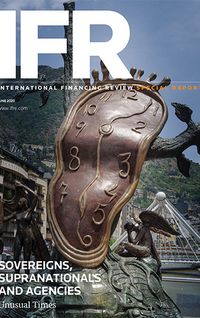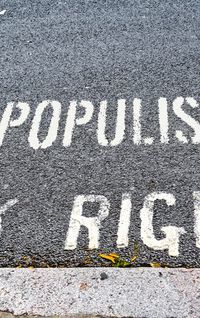Of all countries, Germany was at the forefront of utilising the capital markets to fund its coronavirus response. From a federal to regional level, its public sector institutions tapped into investor demand for safe-haven assets in the face of what were testing times for both the buyside and sellside alike.
Germany has been turning to international capital markets on an unprecedented scale as the federal and regional governments seek additional funding for their responses to the coronavirus crisis. The landmark of a first ever syndication of a conventional Bund highlights this new push, while the Laender - having unexpectedly led the entire SSA sector’s reopening in March - have ramped up activity notably too.
“The federal and regional governments have been faced with unprecedented challenges - their financing needs ballooning due to a combination of loss of revenue and tax receipts, loss of output that impacts deficits, automatic stabilisers and stimulus packages. Whilst the full extent of the coronavirus-related damage will take many months or years to unfold, the immediate pressure on financing has been both sharp and imminent,” said Asif Sherani, head of public sector syndicate at HSBC.
Under these pressures, German public bodies have had to respond very quickly to support the economy. Klaus-Peter Eitel, head of public sector origination and syndication at Commerzbank, lauds “the quick and transparent move of how this issuer group has tackled the market” as “outstanding”.
“The federal government and the regional governments have been extremely reactive to cope with the significant increase in their borrowing requirement,” agreed Pierre Blandin, global head of SSA DCM at Credit Agricole.
The strength of German public finance was a significant asset in the response, bankers noted. “Federal and regional budgets have been well managed in the past. The strong focus on austerity in the past puts them into a relatively favourable position when tackling the challenges of the current crisis. Thus, these strong fundamentals allowed them to quickly initiate the right steps that are required to mitigate social and economic damage,” believes Eitel.
LANDMARK SYNDICATION
In early April, the Bundesrepublik Deutschland-Finanzagentur debt management agency provided market participants with an updated funding plan.
This “increased the size of their auctions and introduced significant changes such as new tenors (12-month Bubills, seven and 15-year Bunds), as well the use of syndication for the new 15–year and a tap of their 30-year (August 2050) - a format never used before for conventional Bunds”, said Blandin.
Previously, Germany had only used syndication for non-standard products such as foreign currency and inflation-linked debt.
But with the federal government needing to increase borrowing significantly to fund its coronavirus response – the Q2 20 target was upped twice to €130.5bn – the eurozone's reference sovereign credit finally embraced the technique for its core product.
The decision caught bankers off guard. “The reintroduction of syndications of the Finanzagentur certainly came as a surprise – especially as the envisaged green bond had been discussed to take place in an auction format,” said Commerz’s Eitel.
The Finanzagentur has said that its selection procedure for lead managers includes a rotation mechanism, though the full parameters are not publicly communicated. But it appears to place most emphasis on sales and trading of Bunds.
"It is clear that those banks that have strongly supported the Bund in the past in their role as members of the Bund Issues Auction Group will receive special consideration', a spokesperson said recently.
The group comprises the 36 primary dealers in German federal debt. The agency publishes biannual rankings of the group’s bidding performance. These are weighted by maturity.
The most recent ranking (for H2 2019) featured only one domestic player - Commerzbank - in the top five, which was topped by BNP Paribas. The most striking member of this group was Denmark's Danske Bank, which came fifth. Another non-eurozone player, Bank of America, was fourth.
Moreover, only a handful of local banks feature in the top 20. The German/Italian UniCredit was sixth and Deutsche Bank seventh, while DZ Bank was 11th and DekaBank 19th.
In the event, the H2 19 top four (BNP Paribas, HSBC, Commerzbank and Bank of America) were picked alongside the agency’s green adviser Credit Agricole, which came eighth in the last ranking.
ZERO CONCESSION
This quintet was at the helm as Germany navigated around a raft of early May public holidays in Asia and Europe to power to a triumphant debut. Investors ignored the previous day's Constitutional Court ruling on Bundesbank participation in the European Central Bank's bond buying programme to rain down orders on the 15-year new issue.
The ruling sent shockwaves through the eurozone government bond markets by giving the ECB three months to demonstrate that its public sector purchasing programme (PSPP) is proportional. Without this, the Bundesbank "may thus no longer participate in the implementation and execution of the ECB decisions at issue". The ruling formed part of a broader judgement by the court which rejected a complaint against the ECB's asset purchasing programmes, including the PSPP.
Despite this uncertainty, the €7.5bn deal drew more than €35.5bn of demand (including €3.15bn of interest from the lead managers).
The Finanzagentur opted to only tighten the deal just 2bp from initial guidance to 22bp over the February 2030 Bund. At that level, it yielded -0.303%.
Although Italy and Spain had achieved larger deals recently, these were in shorter maturities (Italy packaged a €6bn 2050 tap with a €10bn five-year, while Spain issued a €10bn seven-year and €15bn 10-year). Germany's approach was aimed at maximising its very long-dated deal's final size, bankers judged.
Its size aspirations were €5bn–€7bn, according to the lead managers. The €7.5bn final figure included €500m retained by the Finanzagentur to support the bond's secondary market liquidity – a tactic it also uses each Bund auction.
The size meant that the Finanzagentur had sourced a significant chunk of the €11bn it plans to raise from syndicated deals in May and June.
Debate on the deal’s premium was complicated by older, higher-coupon reference bonds. But the leads insisted that there was no concession.
“The result for the 15-year syndication was a very pleasant surprise. Whilst we always expected a solid result, the fact we were able to deliver both large size and zero concession was a stronger than expected outcome,” said Sherani at HSBC.
Blandin described the outcome as “an impressive response from the markets … with no NIP”.
Lee Cumbes, head of public sector debt EMEA at Barclays, who terms the debut “flawless”, believes its “very refined” pricing was appropriate. “It was priced at fair value, which was the right thing for the benchmark for Europe.”
INVESTOR INSIGHT
Syndication has provided the Finanzagentur debt management agency with “very valuable insight” into the Bund investor base, Cumbes believes.
“They know their market’s valuation inside out, but there was not full transparency over investors. It is incredibly useful to have a broad dialogue with the different groups, and for an issuer that is very mindful of having a smooth benchmark market it will pay off in the long term.”
Particularly when the sovereign’s borrowing requirements are significantly higher, “there is always room for advisers’ interpretations of the investor base and to use our franchises to deepen knowledge of it”, he added.
“One of the most important merits of syndications is investor diversification, and indeed they were able to garner strong placement of their 15-year with end investors and a very high bid-to-cover ratio – materially higher in our view than if it was an auction,” said Sherani.
The new availability of syndication mandates and fees has also galvanised banks into supporting Bund auctions more strongly.
“They sent a message to the market and banks responded. Look at the percentage allocated through non-comp. That changed almost overnight after the announcement as pricing changed dramatically,” commented one banker.
Nonetheless, bankers are uncertain whether Germany will remain a user of syndication in the longer term. “Whether this becomes a permanent feature of their funding program going forward depends on the evolution of funding needs in H2 2020 and beyond,” noted Credit Agricole's Blandin.
Sherani at HSBC would “like to think that syndications will still be used by the Finanzagentur even when funding volumes return back to normal”.
“The longer an expansionary fiscal path needs to be pursued, the higher the likelihood for continued syndications,” said Eitel at Commerzbank. “Thus, the question will be on how to fund the needed stimulus package and how to share that burden within Germany but also within Europe.”
GREEN AUCTION
The Finanzagentur has said that Germany will hold another 50 auctions this year, including 10 of inflation-linked debt, to raise €175.5bn of conventional debt and €3.5bn–€5.5bn of linkers.
This supply seems set to include Germany's first green bond. The Finanzagentur has indicated that this landmark transaction, which will feature an innovative "twinning" with an otherwise identical conventional bond, is to be launched by auction in H2.
"We currently plan to issue the first green German government bond through the normal auction process," a spokesperson said.
This approach contrasts with France, which syndicated the €7bn inaugural tranche of its first "OAT verte" in 2017. Agence France Tresor has used syndication for subsequent taps of the 2039 bond too, including a €4bn increase in 2018. Belgium and Ireland launched their green debuts through respective €4.5bn and €3bn syndications – also in 2018.
However, the single currency area does have a precedent for Germany's approach. Last year, the Netherlands used its Direct Dutch Auction system to issue the first Triple A sovereign green bond.
It issued an initial €5.98bn of the 2040 green Dutch State Loan through DDA. Thirty-two registered green buyers were awarded preferential allocations of up to 10% of their bids at the cut-off spread. The deal will be reopened this year for at least €2bn more as the Dutch State Treasury Agency builds towards its targeted minimum of €10bn.
Germany will offer a "high single-digit to low double-digit billion euro amount" of green bonds this year as part of its efforts to start building a green curve with two, five, 10 and 30-year points.
It remains unclear if the Finanzagentur, which has acknowledged the possibility that further syndications are possible in the second half of the year, might opt to syndicate the launch of a second new green twin.
LAENDER DELUGE
Having raised some €70bn in 2019, the Laender are set to ramp their total borrowing up significantly this year. Bankers put the likely target at €110bn-€120bn.
North Rhine-Westphalia alone has indicated that its needs for 2020 could reach €40bn. It originally aimed for some €14bn-€16bn.
Faced with a task of this scale and looming competition from the increasing Bund supply, the Laender were an unlikely driver of the SSA primary market’s reopening in late March after several weeks of near inactivity. Credits such as Hesse and NRW were in the vanguard, accepting notably wider spread levels and new issue concessions than previously as they sought to make headway with their increased funding needs.
Premiums were as high as 15bp on the two large states’ €1.75bn March 2025 and €1.3bn April 2023 taps, for example – though these narrowed over time, particularly once the ECB announced its Pandemic Emergency Purchase Programme (PEPP) in April.
Cumbes at Barclays describes the regular, almost daily flow of Laender new issues from late March as “a great head start” that enabled issuers to tighten their funding back towards pre-crisis levels while obtaining significant volumes.
The fact that the new bonds performed steadily in early weeks suggests the states obtained decent pricing despite being first movers back into the market. “They have done a very good job for taxpayers,” said Cumbes.
Hesse and NRW, as well as peers such as Bavaria, Baden-Wuerttemberg and Schleswig-Holstein, also boosted the size of their issues, said Blandin. These names “came quickly to the markets with larger benchmarks than what they used to issue, going up to €3bn in the case of Bavaria or NRW, and reaching out to a broad range of investors”.
Smaller issuers too increased deal sizes. For example, May’s heavily oversubscribed €750m 10-year from Thuringia was the state’s largest bond since at least 2013, according to IFR data.
NRW’s €2.5bn five-year at the start of May was particularly notable. Despite the sector’s welter of supply over the previous five weeks and the period’s narrowing of spreads and concessions, it attracted a €6.5bn-plus order book unprecedented for Laender debt. At 14bp over swaps, it carried no new issue premium.
While Laender euro debt attracted some foreign buying, particularly from France on an asset swap basis, NRW also diversified its investor support by accessing US dollar demand. The state issued as much as US$2.95bn in a dual-tranche fixed and floating-rate package in late April.
The Laender have experienced “completely unprecedented” changes in both expenditure and revenue and a more “condensed” increase in their borrowing requirements than in the eurozone crisis, due to the urgency of the pandemic. Yet they “have been able to execute with great efficiency”, believes Cumbes.
He attributes this success to two factors in particular – the long experience of the sector’s borrowing officials and their early action.
“The Laender don’t usually attract the highest profile headlines, but these are often well practised professionals. And they were the ones who really did step into a rather uncertain market to set new clearing levels, and on rather efficient terms,” he said.
“The German state supply has increased drastically in a very short period. It has been surprising that it was not more spaced out, but equally the market’s ability to absorb the huge volumes has been an unexpected surprise,” noted Sherani at HSBC.
Meanwhile, with spreads to their parents at their tightest ever, state development banks also harnessed the positive funding conditions. Although this group’s heavyweights, Baden-Wuerttemberg’s L-Bank and NRW.Bank, were mostly active in foreign currencies, others such as Hamburgische Investitions- und Förderbank (IFB Hamburg), Investitionsbank Berlin, Investitionsbank Schleswig-Holstein and Wirtschafts- und Infrastrukturbank Hessen (WIBank) all featured in euros.
The latter’s €500m seven-year at the start of May was the state-guaranteed issuer's first in nearly two years, IFR data show.
AGENCY ANGLE
Normally Germany’s most prominent international borrowers, the low post-crisis profile of the two federal agencies KfW and Landwirtschaftliche Rentenbank has also been notable. After a pair of jumbo new issues (a €4bn five-year and a €5bn June 2023) within a week in late March and early April, KfW's only substantial offering since was a €1bn 2024 tap in mid-April.
The agency, which is to provide liquidity aid for German companies affected by the coronavirus crisis through a series of additional loan facilities termed "KfW Special Program 2020", remains ahead of its unchanged €75bn long-term borrowing requirement for 2020, though. By early May, it had already raised €35bn.
Germany has committed up to €100bn to cover KfW's requirements under the special programme, which German commercial banks will intermediate. The state's refinancing would be through its new Economic Stabilisation Fund (Wirtschaftsstabilisierungsfonds, WSF), which is being established in response to the crisis.
"This new refinancing option is limited until year-end 2021, but KfW is under no obligation to utilise it," the filing states.
The Finanzagentur will administer WSF. However, "in order to optimise its funding, KfW may pre-fund the KfW Special Program 2020 via short-term products/instruments and replace such pre-funding at a later date with longer-term funding through the WSF", it stated in a recent US SEC filing.
Rentenbank, meanwhile, has not entered its domestic currency in any significant size in 2020. The agency has issued two post-crisis benchmarks in US dollars, though – including a notably oversubscribed US$2bn five-year in late May.
To see the digital version of this report, please click here
To purchase printed copies or a PDF of this report, please email gloria.balbastro@refinitiv.com
![]()




























